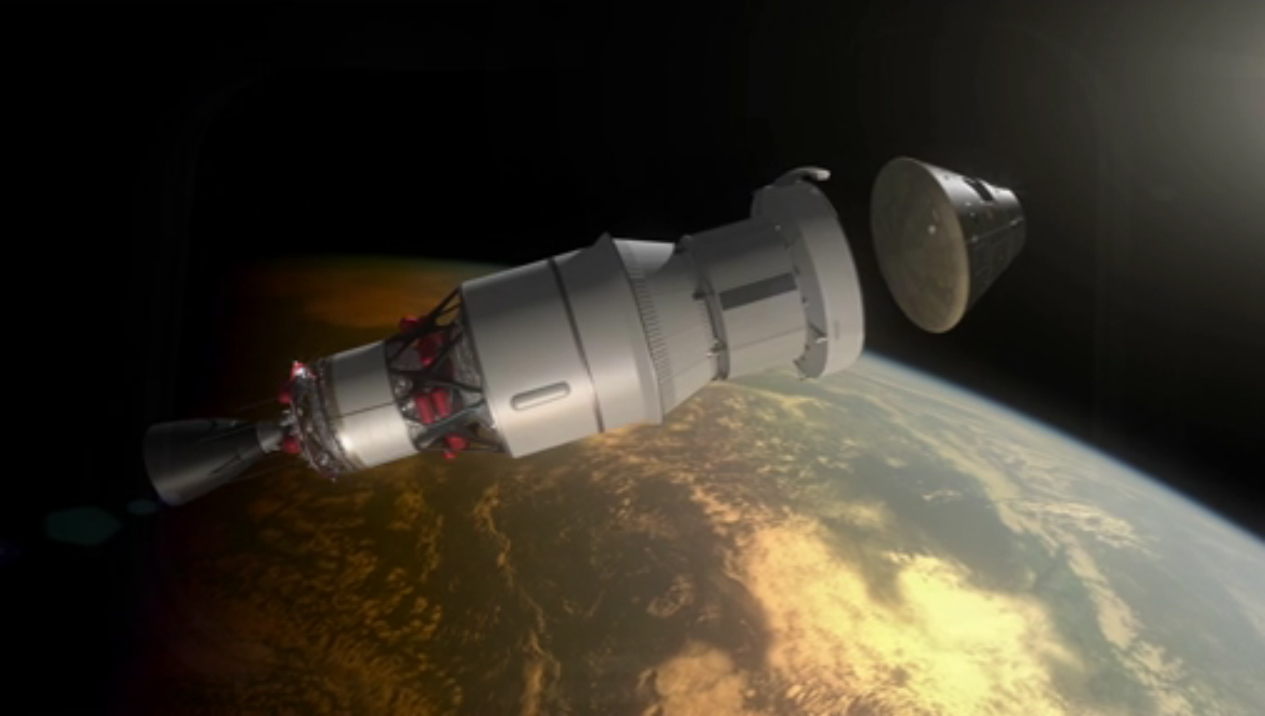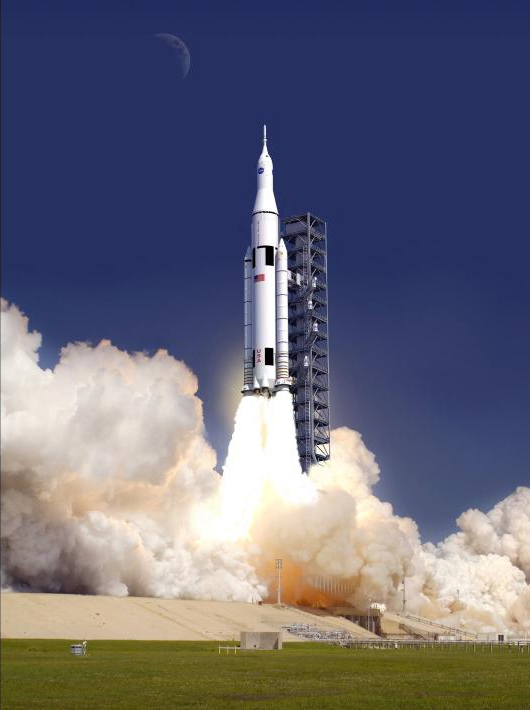NASA Wants 2014 Test Flight for Deep Space Capsule

NASA's new spaceship to carry astronauts off the planet may launch on an unmanned test flight by 2014, three years earlier than planned, to mimic a return from deep space, agency officials said Tuesday (Nov. 8).
The proposed test flight, called the Exploration Flight Test 1, would launch a robotic version of NASA's Orion Multi-Purpose Crew Vehicle on a two-orbit spaceflight. The capsule would then re-enter the Earth's atmosphere in an ultra-fast descent to recreate some of the scorching hot temperatures it would experience during a return from a deep space trip to an asteroid — a goal set for NASA by President Barack Obama.
"The entry part of the test will produce data needed to develop a spacecraft capable of surviving speeds greater than 20,000 mph and safely return astronauts from beyond Earth orbit," said William Gerstenmaier, NASA's associate administrator for human exploration and operations. "This test is very important to the detailed design process in terms of the data we expect to receive."
Such a flight would mark an earlier debut for the Orion capsule, which was previously slated for a December 2017 launch test atop NASA's new mega-rocket, the Space Launch System.
Launching Orion
NASA's Orion deep space capsule is being built by aerospace veteran Lockheed Martin Space Systems and the unmanned test flight proposal would add that first flight to NASA's current contract with the company, agency officials said.
The unmanned launch test would cost about $370 million and launch atop an expendable heavy-lift rocket that has yet to be selected, NASA spokesman Josh Byerly told SPACE.com. It would send the robotic Orion vehicle into a high orbit that will reach 5,000 miles (8,046 kilometers) above Earth at its highest point, he added. [Photos and video of Orion test flight]
Get the Space.com Newsletter
Breaking space news, the latest updates on rocket launches, skywatching events and more!
"What the management realized is that we can actually do this on a commercial rocket," Byerly said. "It can actually get [the capsule] up high enough to get a pretty good return velocity."
The flight test would send the Orion capsule plunging back to Earth at a staggering 30,280 feet (9,229 meters) per second, which is about 84 percent of the speed NASA's Apollo spacecraft hit during their return trips from the moon.
According to NASA's mission plan, the Orion Exploration Flight Test 1 would splash down in the ocean at the end of its two-orbit flight. The capsule would then be retrieved by a recovery crew, allowing NASA to practice the techniques needed to recover a crewed Orion capsule.
The test flight would launch from Cape Canaveral Air Force Station in Florida and be watched over by launch controllers at NASA's Kennedy Space Center, Byerly said. Another flight control team would watch over the test from NASA's Mission Control at the Johnson Space Center in Houston.
According to a NASA description, the 2014 test flight would allow the space agency to perform "earlier and more robust testing of critical Orion spacecraft systems that contribute to 10 of the 16 highest risks to crew survivability and exploration mission failure."

NASA's new spaceship
The Orion spacecraft is NASA's next vehicle to carry astronauts into space. NASA's new Space Launch System, a towering booster that would be the most powerful rocket ever built when fully realized, will serve as the launch vehicle for Orion and other deep space exploration hardware.
The space agency retired its iconic space shuttle fleet in July after 30 years of service and currently plans to rely on privately built, commercial space taxis to ferry U.S. astronauts to and from the International Space Station until the Orion spacecraft is operational.
NASA's new space exploration plan, unveiled by President Obama in April 2010, is to send astronauts to visit an asteroid by 2020, then aim for a manned Mars mission in the 2030s.
"President Obama and Congress have laid out an ambitious space exploration plan, and NASA is moving out quickly to implement it," NASA Associate Administrator for Communications David Weaver said. "This flight test will provide invaluable data to support the deep space exploration missions this nation is embarking upon."
You can follow SPACE.com Managing Editor Tariq Malik on Twitter @tariqjmalik. Follow SPACE.com for the latest in space science and exploration news on Twitter @Spacedotcom and on Facebook.
Join our Space Forums to keep talking space on the latest missions, night sky and more! And if you have a news tip, correction or comment, let us know at: community@space.com.

Tariq is the Editor-in-Chief of Space.com and joined the team in 2001, first as an intern and staff writer, and later as an editor. He covers human spaceflight, exploration and space science, as well as skywatching and entertainment. He became Space.com's Managing Editor in 2009 and Editor-in-Chief in 2019. Before joining Space.com, Tariq was a staff reporter for The Los Angeles Times covering education and city beats in La Habra, Fullerton and Huntington Beach. In October 2022, Tariq received the Harry Kolcum Award for excellence in space reporting from the National Space Club Florida Committee. He is also an Eagle Scout (yes, he has the Space Exploration merit badge) and went to Space Camp four times as a kid and a fifth time as an adult. He has journalism degrees from the University of Southern California and New York University. You can find Tariq at Space.com and as the co-host to the This Week In Space podcast with space historian Rod Pyle on the TWiT network. To see his latest project, you can follow Tariq on Twitter @tariqjmalik.









